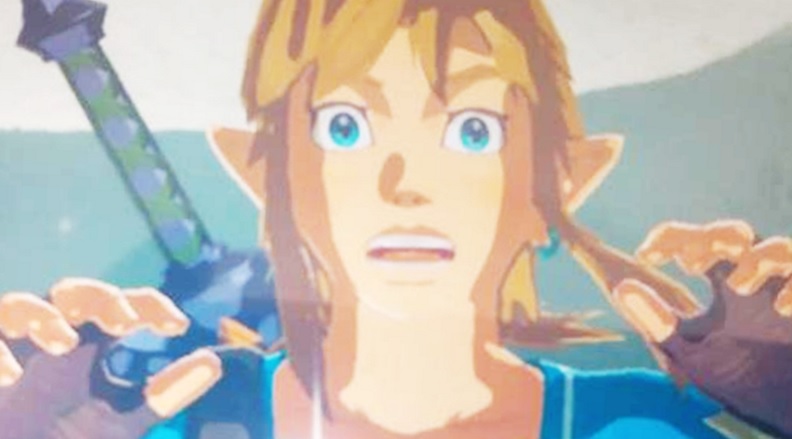
Over the holiday season we’ll be republishing a series of Nintendo Life articles, interviews and other features from the previous twelve months that we consider to be our Best of 2020. Hopefully, this will give you a chance to catch up on pieces you missed, or simply enjoy looking back on a year which did have some highlights — honest!
This feature was originally published in October 2020.
You’ve likely seen the news that Fire Emblem: Shadow Dragon And The Blade Of Light is finally being localised in the west. Originally a Japan-only title, this NES game kicked off Nintendo’s prolific JRPG series and to celebrate Fire Emblem’s 30th Anniversary, it’s being re-released on December 4th with a new translation. Joining Three Houses on Switch alongside spin-off entries Warriors and Tokyo Mirage Sessions #FE Encore, this announcement caused quite a stir on social media, seeing criticism over the limited release plan and (unintentionally) renewing interest in a Mother 3 location.
First released in 1990, Fire Emblem was initially conceived by designer Shouzou Kaga, coming in as a joint development effort between Intelligent Systems and Nintendo Research & Development 1. Having finished development on Famicom Wars, Intelligent Systems wished to move away from that military setting, setting out to create an RPG with strong narrative focus, making you care about the characters. Utilising turn-based gameplay on a grid-based map, Shadow Dragon was soon born, and each character was unique, coming with different unit classes, individual stats and most notably, could die permanently
This story took us to the Archanea continent, focused on the Kingdom of Altea and fair warning, some minor story spoilers will follow here. Formed 100 years previously when King Anri fended off the Dolhr Empire, Anri killed Shadow Dragon Medeus with the sacred blade, Falchion, ending Dolhr’s assault. Finding Medeus resurrected by evil wizard Gharnef, Dolhr launches a new invasion at his behest, killing Altea’s current king, Cornelius, and causing Prince Marth to make his escape. Taking refuge in the island nation of Talys, Marth sets out to reclaim his homeland with an army of knights several years later, allying with other royals like Prince Hardin and Princess of the Divine Dragon tribe, Tiki. After many battles, Marth finally succeeds, defeating both Gharnef and I God.

Though it wasn’t the first tactical RPG game, it went a long way towards popularizing this genre, seeing a lukewarm critical response initially but gaining significant traction amongst fans. Realising it was onto a winning formula, Intelligent Systems began working on a new NES entry, and two years later, Fire Emblem Gaiden launched. Though it features some links to Shadow Dragon like returning characters Est, Palla and Catria, this was ultimately a separate affair and took place on a neighbouring continent, Valentia. It’s a story better known these days for its superb 3DS remake, Fire Emblem Echoes: Shadows of Valentia.
Marth’s adventures weren’t done yet, though, and come 1994, Fire Emblem made its SNES debut with Istery Of The Emblem. Presented as a story of two parts, Istery remade Shadow Dragon as “Book 1”, whilst incorporating a brand-new story into “Book 2”. Set two years after Medeus’ defeat, Book 2 shows us that Prince Hardin has become King of Archanea, but has begun a hostile military occupation of nearby countries. When Marth becomes suspicious of this, Hardin brands him a traitor but we soon discover Hardin is now under Gharnef’s influence, trying to revive Medeus yet again. Overcoming this dangerous threat once more, Marth prevails and is crowned King of Archanea.
Though Marth’s main journey ended here and subsequent games moved to different continents, Shadow Dragon remains influential to this day. It left a legacy that future entries would pay frequent homage to. Despite Fire Emblem undergoing significant gameplay evolutions, it never truly forgot those Archanean roots and come 2001, Marth was represented in Super Smash Bros Melee
Most significantly though, this legacy was celebrated on Nintendo DS and back in 2008, Shadow Dragon received a full remake, marking the first time it ever released in the West. Istery Of The Emblem was also remade, though this was curiously never localised. It proved to be a faithful adaptation, one we thought pretty highly of ourselves. Receiving a full visual overhaul, local multiplayer, expanded difficulty choices, rebalanced weapons system and more, it begs the question: why Nintendo didn’t use this version for the Switch? By comparison, it makes the NES version practically redundant to all but hardcore fans, though this would also require reworking the dual-screen elements to fit the Switch.

Remakes are one matter but amongst the main entries, sales had begun declining and after Nintendo launched the 3DS, Intelligent Systems prepared for what could’ve been Fire Emblem’s last hurrah. Incorporating elements of previous games but making it more accessible to newcomers, Fire Emblem: Awakening finally brought back to Archanea, though these days it goes by the name Ylisse. Set two millennia after Shadow Dragon, our protagonist Chrom is Marth’s distant descendant, running an army called the “Shepherds” who combat undead monsters referred to as “The Risen”, separately dealing with hostilities from neighbouring country Plegia.
It turned out fantastically and though some elements proved divisive amongst established fans, such as including an option to remove permadeath, sales were strong. Fire Emblem was saved and subsequent entries soon followed. Beyond Awakening, Shadow Dragon’s influence remained prevalent and spin-offs aside, Fire Emblem continued visiting this setting. Though set on a different continent, Fates included several Awakening characters, briefly taking us back to Ylisse within the Before Awakening DLC too. In a similar approach, Shadows of Valentia also took us to Archanea, including a brand new sixth chapter which detailed the origins of Awakening’s main villain, The Fell Dragon.
Fire Emblem: Shadow Dragon And The Blade Of Light has been a long time coming for Western fans, and though it’s been over 30 years since launch, it’s certainly better late than never. Proving a crucial inspiration for tactical RPGs, there’s no doubt about the legacy Shadow Dragon left behind. Though the decision to make this a limited release has raised eyebrows, and choosing to port the NES edition over its DS remake is questionable, we’re about to see a significant piece of gaming history land on Switch next month and we simply cannot wait to give it a try.
Do you have any fond memories of Fire Emblem? What was the first entry you played? Let us know in the comments!
.








